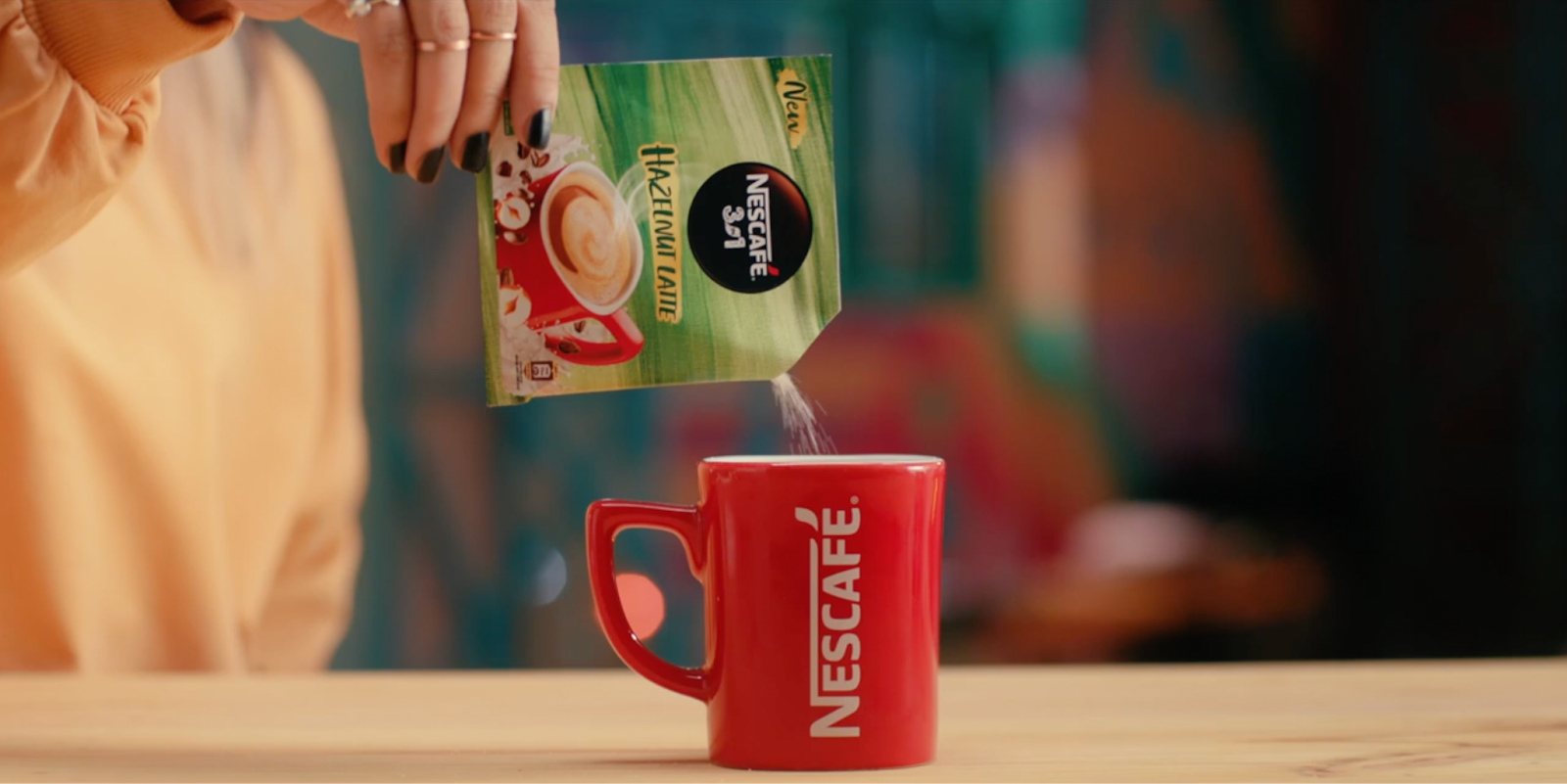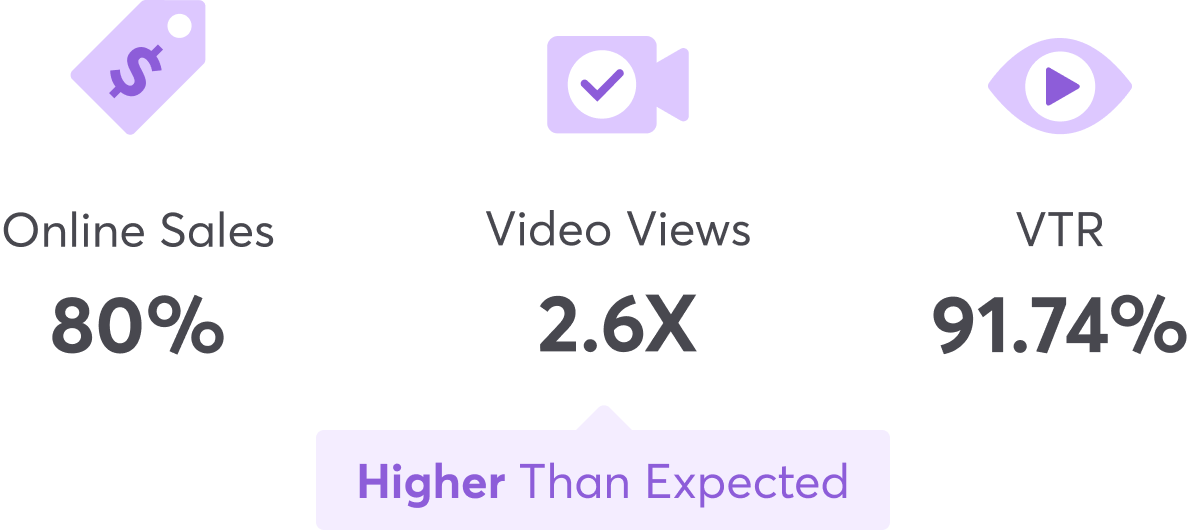Knowing your target audience is key. Using this knowledge at the right time – that’s what leads to highly successful advertising campaigns.
This is the exact combination that Nestlé used to promote their new Nescafé Hazelnut Latte.
Together with Eskimi and Wavemaker media agency, Nestlé ran a highly targeted video advertising campaign to raise awareness about the new product among coffee lovers in Bangladesh.
“We achieved 2.6 times more video views than we expected, and it left Nestlé and us positively shocked,” said Shakhawat Zaman Tushar, Assistant Media Manager at Wavemaker.
"Since it was a new product, we were expecting lower results, but thanks to Eskimi support and proper targeting, we could reach something that’s really a big achievement for us."
Continue reading to learn about the strategy used for this Nestlé campaign and check out the amazing results it achieved.
About Nestlé
Nestlé is a multinational food and beverage company headquartered in Vevey, Switzerland. Founded in 1866 by Henri Nestlé, it is now one of the world's most recognizable consumer goods companies.

Nestlé offers a wide range of food and beverages, from baby to pet food. Some of its best-known brands include KitKat, Maggi, Nestea, Nespresso, Smarties, Nesquik, Purina, Nescafé, of course, and many others.
Twenty-nine of this FMCG giant’s brands have annual sales of over 1 billion (including the above).
Overall, Nestlé has around 275,000 employees in 188 countries and over 2,000 brands, most of which are loved by consumers around the globe.
In this video advertising campaign with Eskimi, Nestlé wanted to promote a new flavor of the Nescafé coffee, focusing on increased coffee consumption during Eid (a celebration that marks the end of Ramadan) in Bangladesh.
Since the product was new, the key goal of this campaign was to generate awareness among the younger generation that enjoys spending their time in coffee places and match consumer sentiment toward coffee during that time.
Overcoming market challenges with innovative advertising solutions
Compared to the traditional media (e.g., TV or press), the digital marketing industry in Bangladesh is just in its infancy stage, thus, it’s still challenging to get access to innovative ad placements when you run digital campaigns.
“Digital advertising innovations are still hard to access in our market,” said Sumaiya Noor, Senior Media Executive at Wavemaker. “Available channels, for instance, social media, are already cluttered, so the main challenge that we and our clients actually face is how we can cut through that clutter and communicate effectively and, ideally, innovatively.”

Another challenge that advertisers in Bangladesh face is measuring KPIs and the ROI of digital campaigns alone.
“Naturally, clients want to know how their campaigns are doing – how much awareness they generate, how they went in terms of conversions, or how these campaigns contribute to their overall marketing efforts. We still struggle with brand lift studies and other measurements that are there but are still very new to us.”
Shakhawat Zaman Tushar added that the two most popular digital media platforms in Bangladesh, Facebook and YouTube, have already been explored by most brands, so naturally, they are starting to look for something new – advertising on channels where consumers already are, but the brands aren’t.
“Brands want to do something innovative and captivating at the same time so the customer can learn about them and their products. This is a tremendous opportunity, in our market at least. I think this is where Eskimi or any other platform helps us find ways to equip our clients with necessary solutions so that they can start investing more in digital advertising,” said Shakhawat Zaman Tushar.
Campaign strategy: meeting consumers where they are
Once Nestlé discovered that the hazelnut flavor and latte were common and very popular among Nescafé coffee lovers, the company decided to launch it in more markets, including Bangladesh.
For a successful launch, the brand needed an impactful campaign to generate enough awareness, inform local people about this new product, and encourage them to try it out.
“In Bangladesh, people actually prefer tea, especially older generations,” said Sumaiya Noor. “Coffee consumers are mostly young people that go to coffee places to relax and socialize, and you can clearly see this in locations that are close to office buildings or universities.
“So young professionals and university students were our primary target audience for this product. They already consume coffee, they love it, and we assumed they would be willing to test this new coffee flavor from Nescafé as well.”
Perfect timing for launching a campaign for coffee
The launch of the Nescafé Hazelnut Latte campaign was set during Eid time, which marks the end of Ramadan, the Muslim holy month of fasting, prayer, self-reflection, and community.
“During Ramadan, people consume less coffee,” said Sumaiya Noor. “ But once Eid comes, people tend to go to cafes and spend hours there chatting with their friends and colleagues.”
Shakhawat Zaman Tushar added:
“Ramadan is a very spiritual and religious month for us, so we didn’t do any campaigns during it. But analyzing the previous trends, we found out that the footfall to the coffee shops is higher than usual during Eid time.
"That’s when we decided to target specific coffee shops and people who go there instead of trying to target everyone, maybe even those who have nothing to do with coffee. So that’s why we used geofence targeting."

Geofence targeting for the highest precision
The Nescafé Hazelnut Latte campaign ran for only 10 days when the footfall to various cafes was the highest. For maximum precision, Nestlé used geofencing targeting on chosen coffee shops and their branches around Dhaka, covering nearly 45 locations overall.
To those who need a brief introduction to geofencing targeting – it’s a targeting type that allows advertisers to target all users within a specific area by drawing a virtual geographic boundary or a “fence” around it.

In this case, a “fence” was created around almost 45 most popular coffee places in the capital of Bangladesh.
“Geofencing was the idea we actually got from Eskimi,” said Shakhawat Zaman Tushar. “We mentioned that we wanted to target coffee shops but needed to figure out how to do it as accurately as possible since it’s a small area.
“So the Eskimi team came up with the idea of geofencing because it would help us limit the targeting, which was exactly what we needed.
"This kind of support and proactive interactions are among the main reasons we work with Eskimi."
Results
Both Nestlé and the agency were happy and even positively surprised by the results of this video advertising campaign, calling it a win-win situation.

- Overall advertising efforts resulted in an 80% increase in online sales from this particular product
- The number of video views was 2.6 times higher than expected
- VTR reached 91.74%
- CPCV was 55% lower compared to other digital campaigns

“We’ve been running other campaigns in the past months, and we haven’t seen as much interaction or video views as we achieved when targeting these small areas,” added Shakhawat Zaman Tushar.
“We also wanted as many people as possible to watch our video. We had expectations before the campaign, but they were exceeded dramatically – around 2.6 times compared to the initial KPI. It is a massive achievement for us and the Nestlé team – all of us expected lower results, considering it’s a new product and very specific targeting.
"What’s even more amazing is that we were aiming for awareness mostly and conversions were kind of a secondary thing. However, we found out that the result of our digital campaign was an 80% increase for this particular Nescafé flavor compared to our regular campaigns. That is a huge achievement for all of us."
Sumaiya Noor added:
“We often run campaigns with Eskimi, but this was something innovative that caught people’s eyes. And it’s important to pinpoint that while the core objective was awareness, we also got conversions because of this type of accurate targeting. It was highly relevant to our target audience, our communication resonated with them, and they responded.
“We’re grateful to Eskimi for always supporting us, innovation, and data-driven strategy. These are the things that actually make a difference.”
.png)
.png)
.png)


















